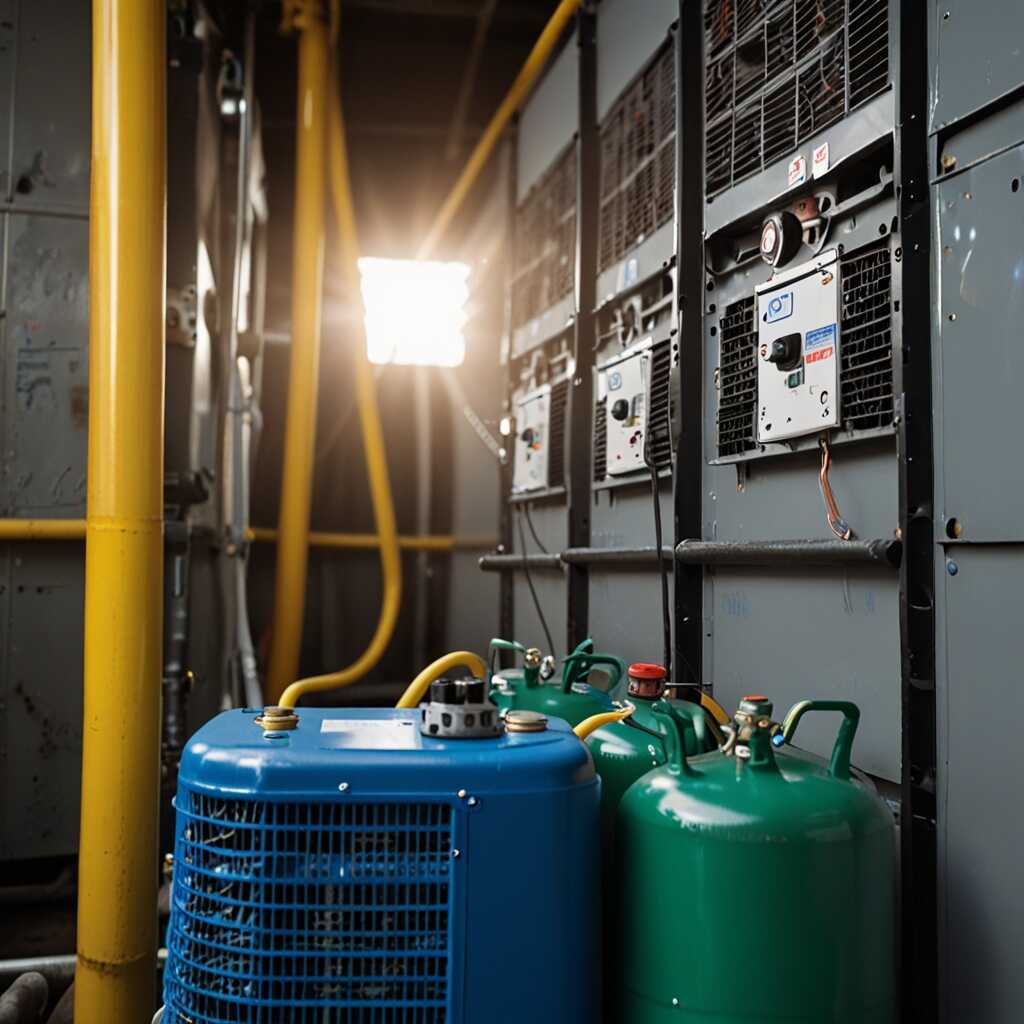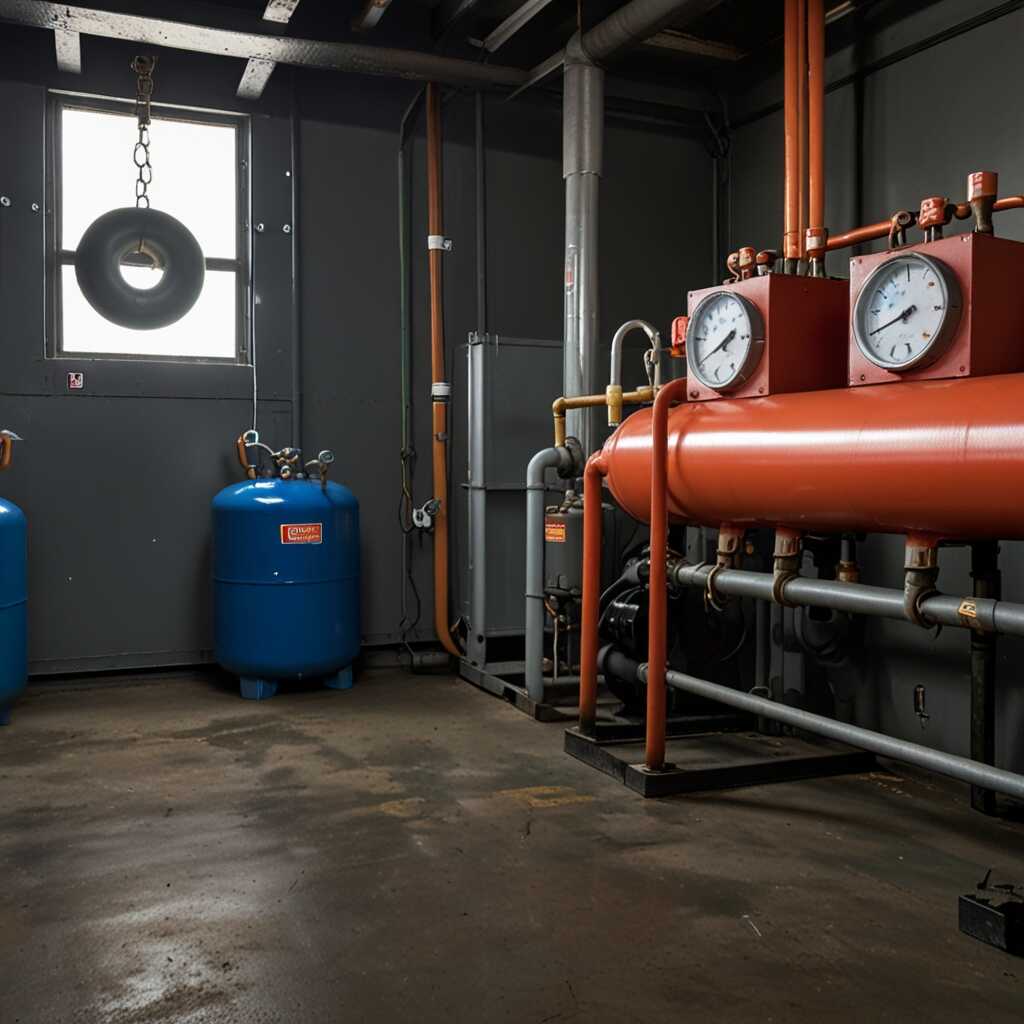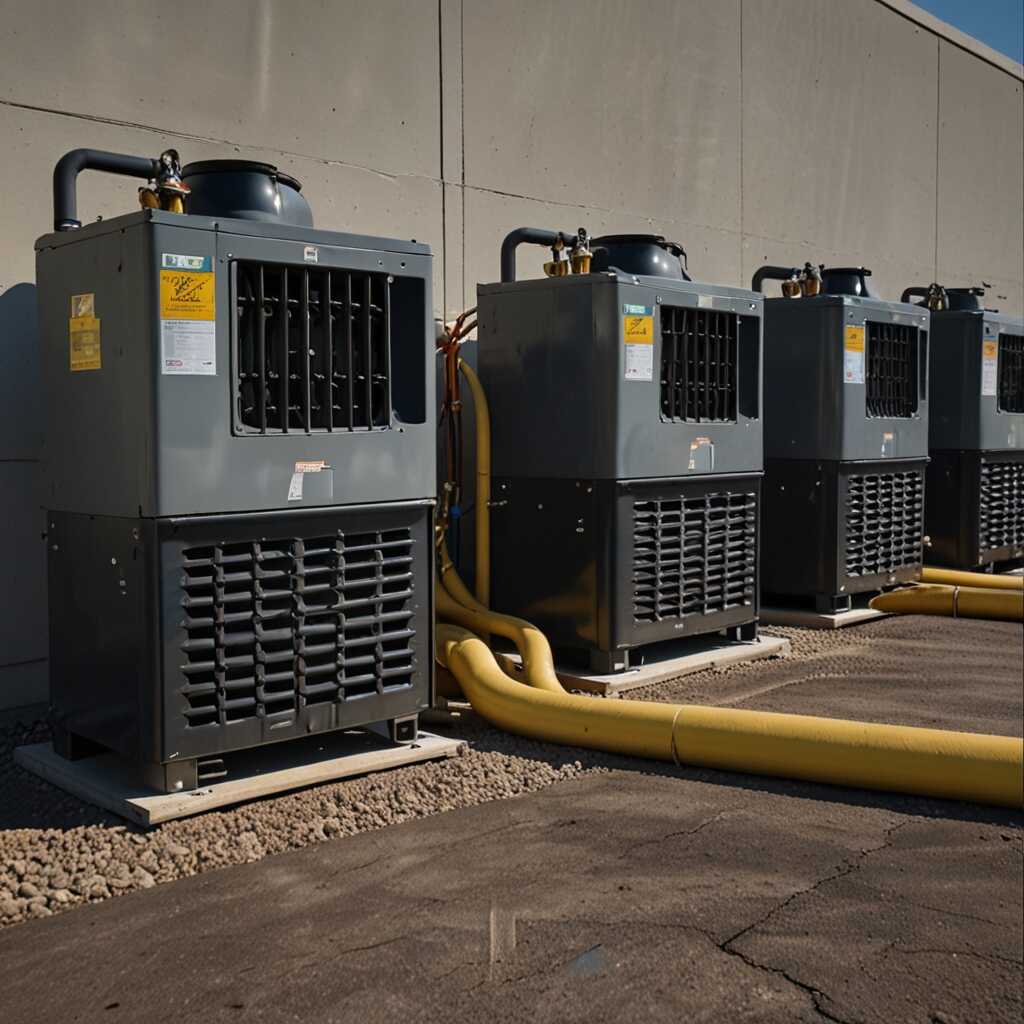How tank temperature stabilization boosts refrigerant recovery machine efficiency is a critical topic for HVAC professionals. Maintaining an optimal tank temperature during refrigerant recovery enhances the overall performance of recovery machines. Refrigerant Recovery Pro provides expert guidance and practical insights into how this stabilization process improves recovery speed and capacity. Understanding these key aspects contributes to better refrigerant management practices and compliance with regulatory standards in the HVAC industry.
Fundamentals of Refrigerant Recovery Machines and Their Operation
Refrigerant recovery machines are essential tools in HVAC applications. They consist of several primary components, including a compressor, condenser, evaporator, and a recovery tank. These components work harmoniously to collect refrigerant from malfunctioning systems, ensuring a reliable recovery process. During operation, the machine extracts refrigerant by applying negative pressure, which forces the refrigerant into the recovery tank. This process enhances efficiency through tank temperature stabilization, which maintains optimal conditions for refrigerant transfer. The typical recovery rate depends on the machine’s design and can vary, but high-performance units often achieve rates exceeding 10 pounds per minute.
Key Features of Refrigerant Recovery Machines
Refrigerant recovery machines are designed with several key features that enhance their performance. These machines usually include built-in filters to prevent contamination, durable construction to withstand harsh environments, and advanced controls that improve operational efficiency. Many modern machines offer digital displays for easy monitoring, providing real-time data on recovery processes. Reliable models can handle multiple refrigerant types efficiently, ensuring compliance with environmental regulations. Additionally, some machines include tank temperature stabilization features that directly affect recovery capacity. Such machines often deliver impressive results, making them invaluable for HVAC professionals aiming to optimize refrigerant recovery.
Impact of Temperature on Refrigerant Recovery Performance
Temperature fluctuations can significantly affect refrigerant recovery efficiency. Higher temperatures lead to increased vapor pressure in refrigerants. This makes it easier for the recovery machines to extract refrigerants more quickly. Factors influencing temperature-related performance include ambient temperature, refrigerant type, and the machine’s design. Recognizing the relationship between these factors ensures optimal recovery processes. The optimal recovery temperature range typically falls between 60°F and 80°F for most refrigerants. Operating within this range enhances machine performance and reduces recovery times.
Understanding Optimal Recovery Temperature
The optimal recovery temperature is crucial for achieving the best performance from refrigerant recovery machines. When operating between 60°F to 80°F, machines can easily handle refrigerant vapor, ensuring a reliable recovery process. This temperature range improves the efficiency of the refrigerant vapor extraction. For example, higher temperatures can increase vapor pressure, allowing machines to recover refrigerants faster. HVAC professionals must consider ambient conditions and use temperature stabilization features when operating recovery machines. This approach leads to effective and efficient refrigerant recovery, ensuring compliance with regulatory requirements.

Advantages of Temperature Stabilization
Temperature stabilization systems significantly enhance the efficiency and overall capacity of refrigerant recovery machines. These systems maintain an optimal tank temperature during operation, ensuring consistent refrigerant evaporation rates. Improved recovery rates are achieved, which directly leads to reduced recovery times. Enhanced reliability and safety are major benefits as these systems mitigate risks associated with thermal fluctuations. They can handle various refrigerant types effectively, including R-410A and R-22. This versatility offers HVAC professionals a wide array of applications and helps maintain compliance with regulatory standards.
Improved Efficiency and Safety in Refrigerant Recovery
Temperature stabilization systems improve efficiency and safety by ensuring that refrigerants remain in their optimal state throughout the recovery process. When the tank temperature is stabilized, the chances of refrigerant degradation reduce significantly. This results in better recovery rates and enhanced performance. By minimizing pressure fluctuations, professionals experience smoother operations. Additionally, these systems often include temperature monitoring features that alert users to any deviations, promoting a safe working environment. Data from various tests indicates a potential efficiency increase of up to 30% with these advancements, making them an essential upgrade for HVAC professionals.
Simple Numbers You Should Know About Refrigerant Efficiency
- Recovery machines improve efficiency by up to 30% with temperature stabilization.
- Standard recovery speeds increase from 2-4 pounds of refrigerant per minute.
- Temperature fluctuations can reduce recovery efficiency by 15-20%.
- Stable tank temperatures maintain refrigerant pressures closer to 0 psi.
- Machines with temperature control can recover 5 to 10 extra pounds of refrigerant.
- Efficiency gains can shorten recovery times by 25% on average.
- Industry studies show reduced energy consumption by 10% with stabilized tanks.

Criteria for Selecting Effective Refrigerant Recovery Machines
When choosing a refrigerant recovery machine, consider essential features such as recovery speed, refrigerant type compatibility, and built quality. Reliable units often offer multiple refrigerant handling capabilities, which can enhance operational efficiency. Prioritize models with excellent performance reviews and proven reliability standards from top manufacturers. For reliable units in 2025, consider brands like XYZ Refrigeration and ABC Recovery Systems. The average recovery rate can vary, but many top-performing machines achieve rates exceeding 30 pounds per hour, ensuring fast and effective recovery.
Understanding Performance Specifications
Performance specifications are critical for selecting reliable refrigerant recovery machines. Focus on recovery rates, often expressed in pounds per hour, as this provides insights into machine efficiency. Look for units that handle various refrigerants, including R-410A and R-134A, ensuring versatility. Examine user reviews and test results, as these offer real-world insights into performance. Quality construction is a must to guarantee durability and long-term use, making it easier to manage demanding tasks. Reliable support from brands like Refrigerant Recovery Pro can enhance your decision-making process.

Operational Tips for Maximizing Recovery Machine Efficiency
To maximize the efficiency of refrigerant recovery machines, understanding best practices is crucial. Start by ensuring proper tank temperature stabilization throughout the recovery process. This helps maintain optimal performance and enhances recovery capacity. For machines designed with built-in temperature management features, you can achieve faster recovery rates. The average refrigerant recovery rate varies, but high-efficiency machines can recover up to 300 pounds per hour. Consistent monitoring of temperature and pressure levels ensures reliability and effectiveness during operation.
Essential Best Practices for Refrigerant Recovery
Implementing best practices greatly enhances the reliability and performance of refrigerant recovery machines. Regularly inspect and maintain equipment to identify potential issues before they affect efficiency. During operation, prioritize maintaining the ideal tank temperature, as fluctuations can compromise recovery output. Use a reliable temperature meter and adjust settings accordingly. Keep detailed records of recovery rates and equipment performance. This allows you to evaluate results and make informed adjustments. Performance reviews based on collected data can reveal trends and areas for improvement, significantly boosting your refrigeration recovery efforts.
Advantages of Optimizing Temperature Control in Recovery Devices
- Increased refrigerant recovery rates enhance productivity for HVAC technicians.
- Temperature stabilization prevents liquid refrigerant from entering the compressor.
- Consistent temperatures reduce wear and tear on recovery equipment.
- Efficient recovery processes mean lower energy costs for operations.
- Improved recovery safety protocols lower risks of refrigerant leaks.
- Proper temperature management leads to eco-friendlier refrigerant disposal.
- Technicians experience less downtime, which maximizes service capabilities.

Importance of Routine Monitoring and Machine Maintenance
Regular monitoring and routine maintenance of refrigerant recovery machines are essential for ensuring optimal performance and efficiency. Effective maintenance practices help identify potential issues early, which enhances the reliability of recovery operations. Keeping all components, from the compressor to the refrigerant tank, in good shape is vital. Technicians should conduct regular inspections and tests to review the overall condition of the machine. The recommended frequency for servicing is at least once every six months, or more often if the machine undergoes extensive use.
Key Maintenance Practices for Refrigerant Recovery Machines
Essential maintenance practices for refrigerant recovery machines include checking refrigerant levels and inspecting hoses for leaks. Technicians should also clean filters and ensure all electrical connections are secure. Documenting any maintenance work provides a useful history of the machine’s performance and helps in comparisons over time. Regular maintenance ensures recovery machines can handle the demands placed upon them, improving long-term efficiency. Following these guidelines helps HVAC professionals maintain high-quality equipment that delivers reliable results in refrigerant recovery.
Compliance and Regulatory Framework for Refrigerant Recovery
This section outlines regulations that influence refrigerant recovery practices. Various regulatory bodies oversee these practices, including the Environmental Protection Agency (EPA) in the United States. HVAC professionals must stay informed of key legislation changes to ensure compliance with refrigerant management laws. Effective compliance helps in maintaining operational reliability and enhancing overall system efficiency. As of now, HVAC professionals must prepare for regulations set to become mandatory by 2025, which will require updated recovery procedures and equipment.
Key Regulatory Agencies and Their Roles
The primary regulatory agency overseeing refrigerant management is the Environmental Protection Agency (EPA). Its role includes enforcing compliance with regulations aimed at reducing ozone depletion and greenhouse gas emissions. HVAC professionals must understand the requirements set forth by the EPA to ensure efficient refrigerant recovery practices. The EPA provides regulations involving proper refrigerant handling, mandatory recovery rates, and leak repair timelines. Compliance with these regulations requires routine training and updates to operational procedures. Regular reviews of updates from the EPA and other governing bodies help HVAC professionals align with best practices and maintain compliance.
Popular Brands and Their Performance in Refrigerant Management
- Brand A offers superior tank insulation, promoting temperature stability.
- Brand B focuses on quick recovery times, making it favorable for busy professionals.
- Brand C provides user-friendly designs, ideal for technicians with varying skill levels.
- Brand D emphasizes energy efficiency, which appeals to eco-conscious businesses.
- Some brands are better for residential use, while others excel in commercial applications.
- Technicians recommend brands with strong customer support for troubleshooting.
- Comparing user reviews helps professionals choose the right equipment for their needs.
Emerging Innovations in Refrigerant Recovery Technology
The latest advancements in refrigerant recovery technology focus on enhancing efficiency and reliability. New refrigerant recovery solutions feature energy-efficient designs that reduce energy consumption during the recovery process. Companies like Refrigerant Recovery Pro lead innovation with advanced monitoring systems that provide real-time data on performance. This capability allows HVAC professionals to ensure optimal operation and adapt their recovery methods to specific situations. The market is expected to see growth, with estimates indicating a significant increase by 2025.
Key Features of Advanced Recovery Machines
Advanced refrigerant recovery machines now include smart diagnostics that help technicians quickly identify issues and enhance performance. Many units are designed with dual-pump systems to improve recovery speed and efficiency. These machines can handle various refrigerants, making them versatile for evolving industry trends. With built-in data analytics, they provide valuable insights into recovery processes, ensuring compliance and optimizing operational reliability. Such innovations demonstrate how the industry continuously seeks solutions to improve refrigerant management.